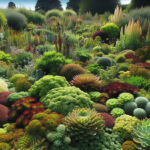Introduction to Sedum
Have you ever marveled at the lush tapestries of green that command attention in rooftop gardens or cozy nooks of urban spaces? There’s a good chance you’re admiring the sedum, a succulent known for its resilience and versatility. Sedum is a botanical gem preferred by green thumbs and novice gardeners alike, not just for its low-maintenance appeal but also for its sheer variety, adding splashes of color to gardens across the globe.
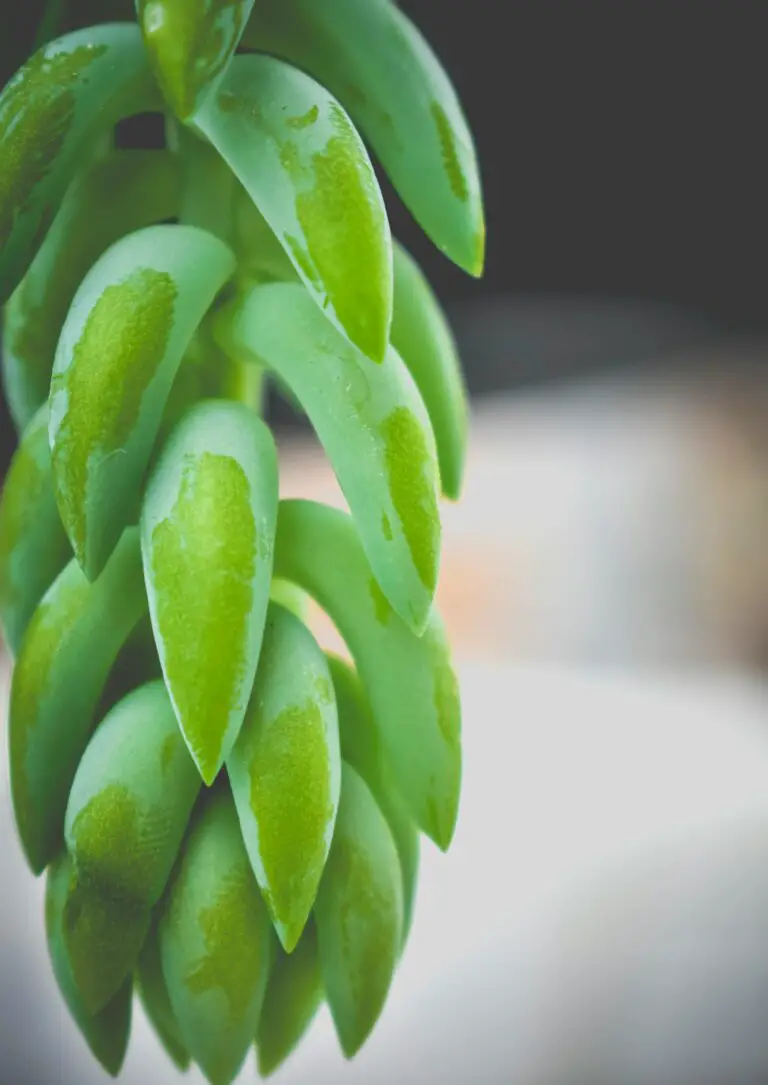
Characterized by its fleshy, water-storing leaves and star-shaped flowers, sedum has made a name for itself as a go-to plant for drought-prone areas, teaching us the art of flourishing with minimal fuss. Proving its mettle through a diverse array of forms, from ground covers to upright perennials, sedum’s adaptability is the stuff of legend. Yet, amidst the green glory, a whisper of concern spreads through gardening circles—is sedum an unwelcome invader in our botanical sanctuaries?
Join us as we strip back the layers of this gardening enigma. From cottage gardens to modern landscapes, the sedum has become a symbol of hardy beauty, but does it threaten the delicate balance of our ecosystem? For insight on nurturing these resilient beauties without risking ecological harmony, explore our comprehensive guide on succulent care.
Let’s embark on a quest to answer the pressing question: Is sedum invasive? By dissecting its behavior in diverse habitats, examining gardeners’ testimonials, and scrutinizing its growth patterns, we’ll unearth whether sedum is indeed a friend or a covert foe in the pantheon of gardening.
Defining Invasive Species
When botanical chatter turns to the topic of invasive species, the room can buzz with concern—and for good reason. Knowing what makes a plant ‘invasive’ isn’t just trivia; it can mean the difference between a harmonious garden and an ecological takeover. So, let’s clear the air: an invasive species is essentially a non-native organism that spreads aggressively, elbowing out local flora, and potentially toppling the delicate balance of local ecosystems. Picture a plant with wanderlust, but no understanding of personal space, and you’ve got your invasive species.
Take, for instance, kudzu in the southern United States. Introduced with good intentions, this climbing vine turned into an ecological party-crasher, smothering native plants under a blanket of leaves. It’s examples like these that underscore the ripple effect an invasive species can have on the surrounding habitat. From snuffing out native wildflowers to throttling trees, invasives can transform landscapes into botanical monocultures.
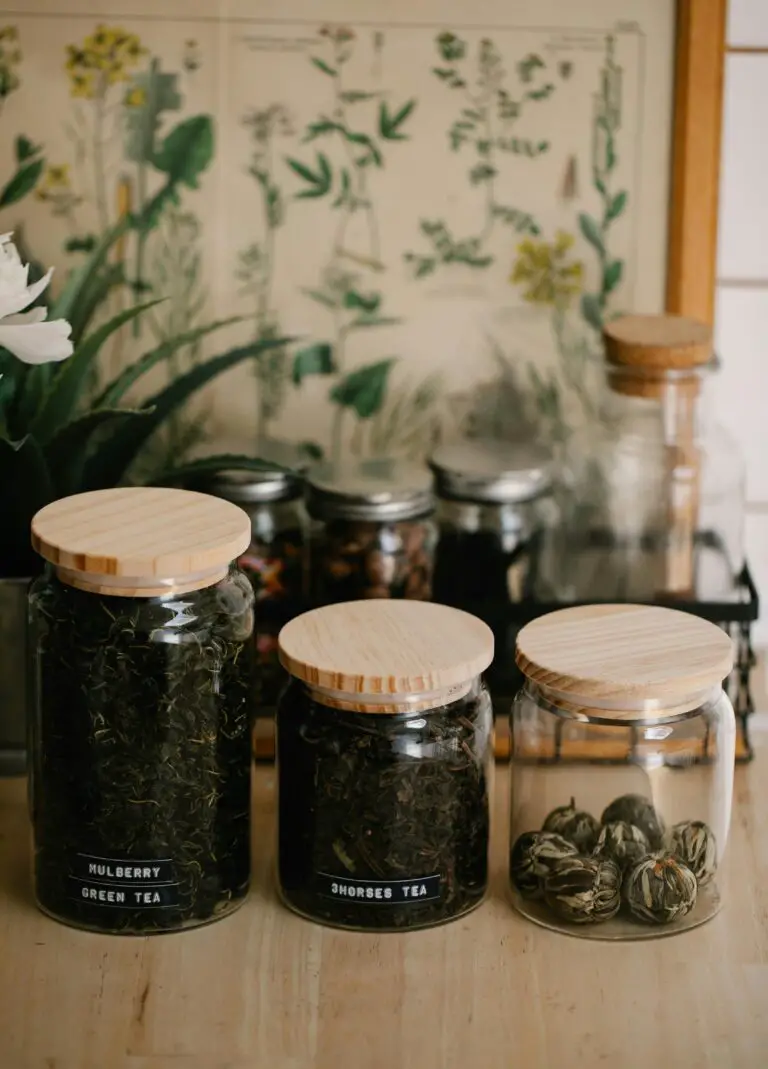
The harm doesn’t stop with the scenery; local fauna often depend on indigenous plants for food and shelter. When these are lost, the animals may be left homeless and hungry. It’s a troubling chain reaction: plants vanish, insects dwindle, birds migrate elsewhere—and just like that, an ecosystem unravels. Understanding these dynamics is crucial when wondering whether sedum, a popular succulent, is invasive or simply misunderstood.
One robust discussion in this field centers around ways climate change is contributing to the spread of invasive plants, making the subject not just about horticulture but also about global environmental health. It’s clear that the criteria determining if a plant is invasive—rapid growth, high reproduction rate, and a tendency to overtake native species—are not to be taken lightly, for the safety of our local flora and the overall wellbeing of our planet.
Is Sedum Invasive? Debunking the Concern
When you think of invasive species, images of kudzu-covered landscapes or relentless zebra mussels might come to mind. But sedum? Those hardy, unassuming succulents that soak up the sun and ask for little in return? It’s a fair question, and one that deserves attention: Is sedum set to join the ranks of these aggressive invaders?
The answer, it turns out, is more about misunderstanding than malice.
Sedum, with its robust nature and low-maintenance charm, has been branded invasive by some. But let’s dive into what that term really implies. True invasive species are ecological bullies. They muscle into territories with the subtle elegance of a sledgehammer, overpowering local flora and disrupting ecosystems. But does sedum actually fit this botanical rap sheet?
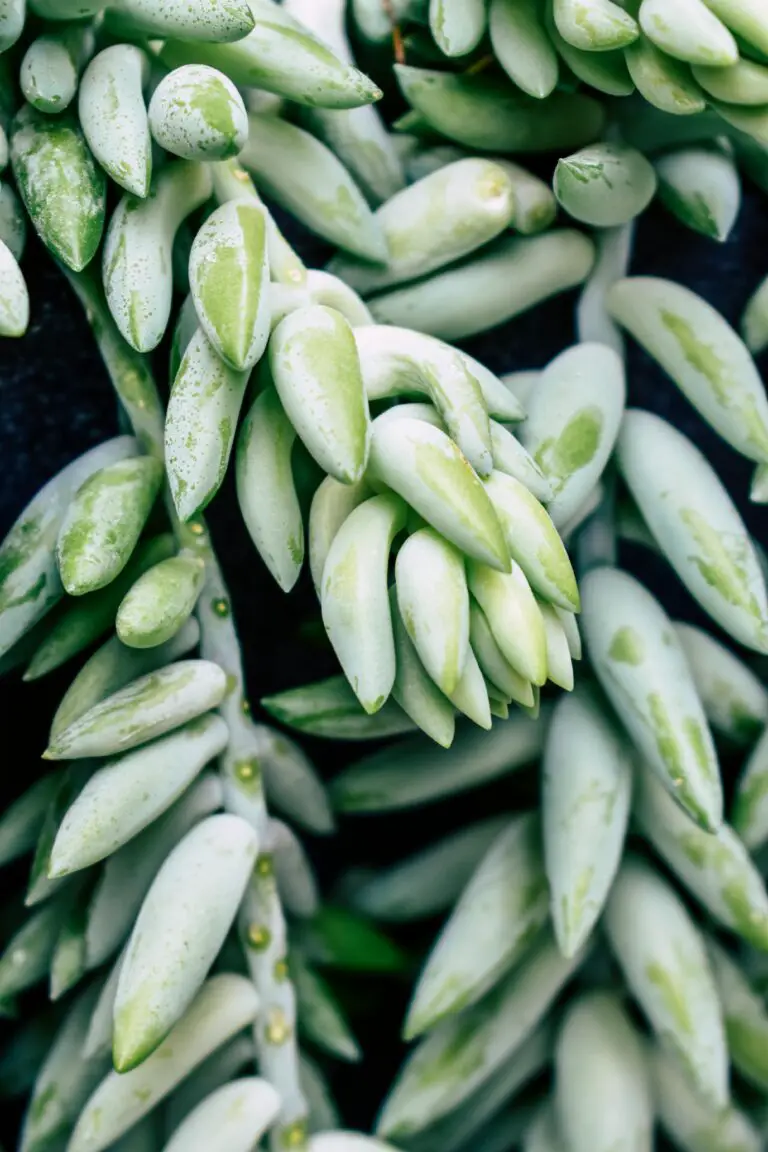
Studies and experts weigh in, and the consensus seems to point to ‘no.’ Sedum may spread with a certain tenacity in favorable conditions, but they often lack the aggressive colonization strategies that characterize true invasives. Sedum doesn’t typically outcompete native species or degrade habitats. Instead, they tend to find little niches in rockeries, walls, and other spots where more demanding plants wouldn’t dare to tread.
Consider the real-life case of sedum roofs. These green roofs are often held up as a paragon of sustainable architecture—hardly the domain of an ecological villain. Sedum thrives in this setting not because it stifles other plant life, but because it can endure where others cannot. It’s resilience, not dominance, that is the sedum’s true calling card.
In the broader picture, sedum’s growth habits simply don’t stack up against the tell-tale signs of invasive species. While they spread effectively via clippings and can survive in a range of conditions, sedum plants generally respect the bounds of their ecosystem. They contribute to biodiversity, provide essential pollinator support, and harken back to their origins as steadfast, yet benign, botanical wanderers.
So, before we rush to judgment on our succulent friends, let’s appreciate the sedum for what it is—a low-water, high-charm addition to any garden that toes the line between spreading joy and spreading out.
Varieties of Sedum and Their Growth Patterns
With a dazzling array of species, sedum, or stonecrop, presents a spectrum of colors, shapes, and sizes. These plucky plants aren’t just pretty faces; they know how to assert themselves in various environments. While most sedum varieties play nicely with others, gardeners sometimes raise an eyebrow, wondering if they’ve invited a botanical bully into their midst. So let’s delve deep into the world of sedum and investigate these growth habits, shall we?
Consider the humble Sedum acre, a tiny titan often spotted carpeting rocky landscapes with its golden blooms. It’s a textbook opportunist, seizing every nook and cranny to spread its cheery disposition. Now, this can be a double-edged sword. In your garden, it can fill spaces with zest, or it can overstep, nudging out shyer botanical bystanders. It’s all about balance and giving each plant its moment in the sun—quite literally!
Another contender is Sedum spectabile, the ‘Autumn Joy’ we all adore. It rises majestically, like a firework frozen mid-burst, and then settles into rust-hued seed heads that enchant throughout winter. This sedum prefers to stay put, focusing on towering upward rather than outward, making it less of an invader and more of a statement piece.
Now for the showstopper, Sedum telephium. With its robust form and stout stems, it’s the Hercules of the sedum world. It spreads at a courteous pace, allowing fellow flora its share of terrain. Yet, under the right conditions—think overly nurturing soil and a spa-like watering regime—it might flex its muscles a bit too much.
On the flip side, the Sedum reflexum or ‘Blue Spruce’ is the zen master of the group. Its powdery blue foliage whispers serenity and prefers to self-contain its sprawling tendencies. It’s a perfect partner for bordering paths or accenting rock gardens, where it quietly enhances the scene without upstaging its greenery comrades.
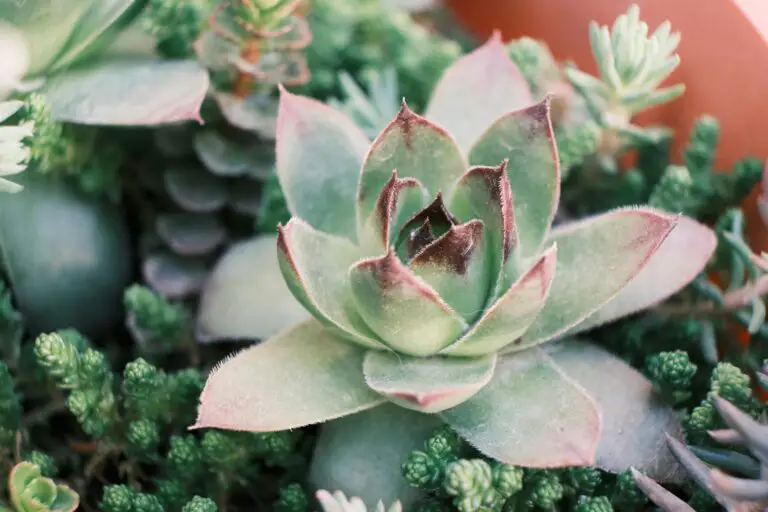
But don’t just take my word for it, why not dive deeper into the secrets of sedum habitats? It’s a riveting read for anyone eager to demystify the natural inclinations of these hardy succulents.
Is any sedum variety truly invasive? It’s a spectrum, a dance between plant and place. Some may take the lead more forcefully, but often it’s not a question of “if” but “where.” Position them wisely, and you’ll have a harmonious ensemble rather than a botanical brawl. Keep an eye on them, and remember—like any good dance partner, it’s all about communication and setting boundaries.
Environmental Impact and Benefits of Sedum
When it comes to sedum, often hailed for its hardiness and drought-resistance, there’s a budding question on the minds of gardeners and eco-enthusiasts alike: “Is sedum invasive?” This succulent sprawls its way into our gardens, but what about its behavior in the wild? Let’s dig into sedum’s ecological role and see how it stacks up in the environment.
First off, sedum’s reputation as a magnet for bees and butterflies isn’t just buzz-worthy—it’s fact! These plants are veritable VIP lounges for pollinators. Imagine a sedum-covered rooftop in the concrete jungle: it’s not just an urban oasis for humans but a busy highway rest stop for our pollen-packing friends. By offering nectar and pollen, sedums serve as crucial pit stops for these creatures, ultimately aiding in the pollination of a multitude of plants.
But it’s not all just about the birds and the bees. Sedum takes root in places where lesser plants might crumble, quite literally. Steep banks and poor soil conditions that spell disaster for erosion are no match for this tough-as-nails plant. By knitting its roots into the substrate, sedum holds the earth firm, laughing in the face of soil erosion that threatens to undermine landscapes.
Now, all this sounds like a green thumbs up for sedum, but it’s not without its thorns. In some areas, non-native sedum species have spread a bit too enthusiastically, nudging out local flora and drawing concern from ecologists. Yet, in these scenarios, it’s essential to untangle human influence from sedum’s natural tendencies. Quite often, it’s the alteration of landscapes by human activity that opens the door for sedum to step in where once there was a more balanced ecosystem.
Nonetheless, when it comes to being an environmental ally, sedum often has more to brag about than to blush over. So while some may be quick to label sedum as invasive, it’s vital to place it in the broader context of ecological equilibrium and human environmental impacts.
To truly picture the role sedum plays, take a peek at this insightful video on how green roofs, often adorned with sedum, contribute to urban ecology:
As with anything in nature, the value of sedum is a nuanced tale that can’t be distilled down to simply “good” or “bad.” It’s a living lesson in balance, diversity, and respect for native ecosystems.
Managing Sedum in the Garden
With their easy-going nature and delightful array of colors and textures, sedum plants have stolen the hearts of many gardeners. But can this succulent friend sometimes play too hard? Let’s dive into effective strategies for keeping your sedum in check—ensuring they enhance your garden without running wild.
Understanding Sedum Behavior
Before you entertain visions of sedum gone rogue, it’s vital to understand their growth habits. Most varieties are well-behaved, and with a smidge of strategy, you can foster a harmonious relationship between your sedum and other garden residents.
Creative Containment
Imagine a sedum so captivated by its space that it forgets to encroach on others. One tried-and-true method is to edge your garden beds with barriers. Materials like metal edging, stones, or even repurposed terracotta pots can serve as charming sentinels, keeping sedum snugly in its designated spot.
Timely Trims
Your sedum can benefit from an occasional haircut, and your garden’s aesthetics will thank you too. Snipping off the overenthusiastic parts before seeds set can prevent a sedum takeover. This simple chore, done annually, can be the difference between cultivation and chaos.
For those seeking a visual guide on nipping sedum sprawl in the bud, here’s an insightful video that offers tips and techniques:
Companion Planting with Vigilance
Companion planting isn’t just for pest control—it’s also a savvy space management technique. Planting robust neighbors next to your sedum can provide friendly competition, keeping it from spreading unchecked. Be the orchestrator of an elegant botanical balance in your backyard with thoughtful plant pairings.
Mulching and Ground Cover Mastery
Mulch isn’t just a decorative cover; it’s a strategic tool. A well-placed mulch barrier can deter sedum’s horizontal scouts from colonizing new lands. Similarly, using low-growing ground cover as living mulch can provide an aesthetically pleasing and functional tactic to curb sedum’s adventurous tendencies.
Sedum in Pots: Practical and Portable
Fancy a bit of control with your creativity? Potted sedums offer an exemplary model of portable, manageable greenery. Plus, when the seasonal theatre of your garden requires a set change, pots allow for flexibility that’ll keep both you and your sedums blissfully content.
Rolling up your sleeves and setting some ground rules for your sedum can ensure that this succulent friend remains just that—a friend, not a foe. With these practices, managing sedum in your garden becomes less of a battle and more of a dance—one that you lead with grace and foresight.
Sedum and Biodiversity: Finding a Balance
When we think of garden warriors, few plants come as close to claiming the title as the steadfast sedum. However, the question “is sedum invasive?” often pops up among gardening enthusiasts. While sedum species are hardly the marauding villains of the plant world, as their reputation might suggest, they can indeed spread their leafy dominion if left to run wild. But here’s where the plot thickens—integrating sedum into our gardens isn’t just about aesthetics; it’s about respecting the intricate dance of biodiversity.
In the quest to create lush landscapes, the value of biodiversity cannot be understated. Imagine a symphony of diverse plant and animal species, each contributing their unique notes to a harmonious natural concerto. Yet, when an assertive performer like sedum steps in, one might worry it could commandeer the stage. Not so fast! Sedum, with its resilience and easy care, can become a reliable understudy in the garden play, supporting a varied cast of flora and fauna—if we choreograph it wisely.
Take, for instance, a community garden I stumbled upon in the rolling hills of Appalachia. Amidst a patchwork of wildflowers and native shrubs, clusters of sedum sparkled like emerald gems. This wasn’t a hostile takeover; it was coexistence exemplified. The gardeners had paired sedum with indigenous species, creating micro-habitats for local wildlife and pollinators, and keeping the ecological scales in balance. Instead of an invasive threat, sedum became a sidekick to biodiversity, proving that thoughtful planting can lead to ecological harmony.
To achieve such a balance, it’s crucial to play matchmaker between sedum and its garden companions. This means understanding the environmental preferences of your sedum variety—be it the sun-worshipping ‘Autumn Joy’ or the shade-friendly ‘Cape Blanco’—and the needs of surrounding plant life. It’s all about setting boundaries, much like teaching a puppy to play nicely at a dog park; the goal is to let sedum mingle without letting it trample over the vegetative diversity.
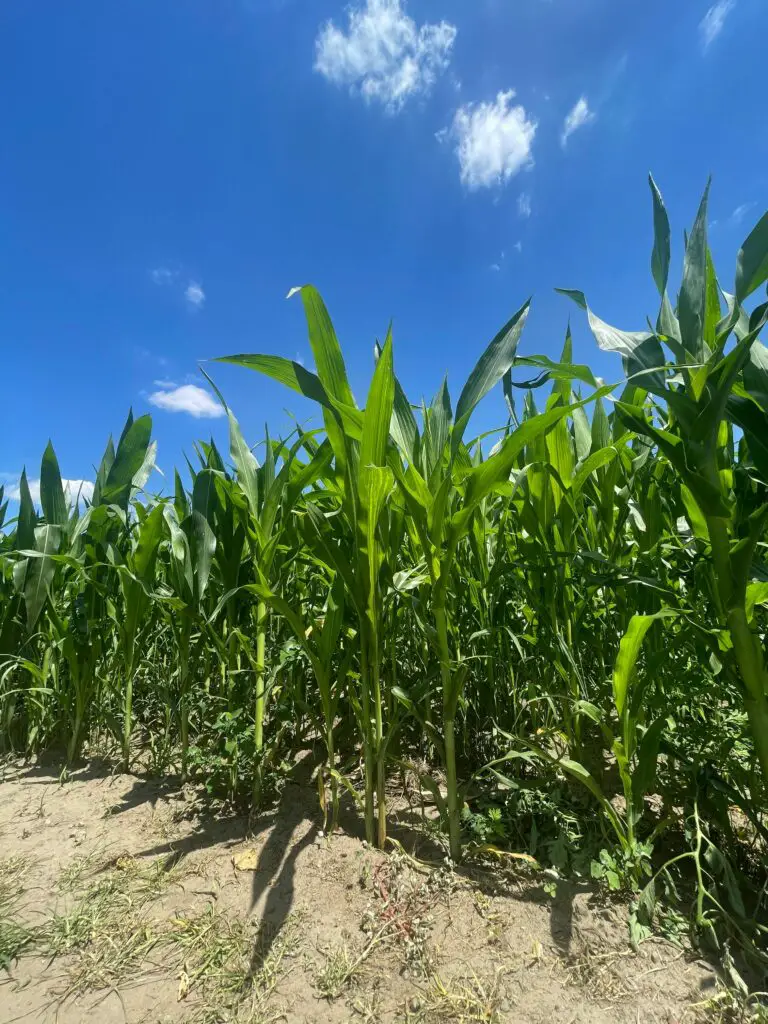
Ultimately, the answer to “is sedum invasive?” boils down to our gardening choices. With a dash of diligence and a sprinkle of strategy, even the most enthusiastic sedum can be a boon to garden biodiversity, rather than a botanical bully. By fostering a partnership between sedum and its neighbors, gardeners can bask in the glory of a vibrant, thriving ecosystem. So, let’s get our gardening gloves on and weave a tapestry of life in our backyards, with sedum as one of the many threads that create a landscape rich in life and beauty.
Frequently Asked Questions
Sedum, a genus of succulent plants, is often the center of a hot debate: is it a benign, easygoing garden resident or an aggressive invader? Well, picture your garden as a stage, and sedum is one of the actors—under the right circumstances, it can either blend into the ensemble or steal the show. But let’s dig in and answer some burning questions about this plant’s reputation.
Is Sedum Really an Invasive Threat?
When we talk invasive, we’re imagining plants that spread like wildfire, right? The truth is, sedum’s behavior can vary widely depending on the species and the environment. For example, while the ‘Autumn Joy’ sedum may politely keep to its corner, some of its cousins can spread with gusto. But will it conquer your garden like a villain in a movie? Unlikely, if you keep an eye on it and manage it properly.
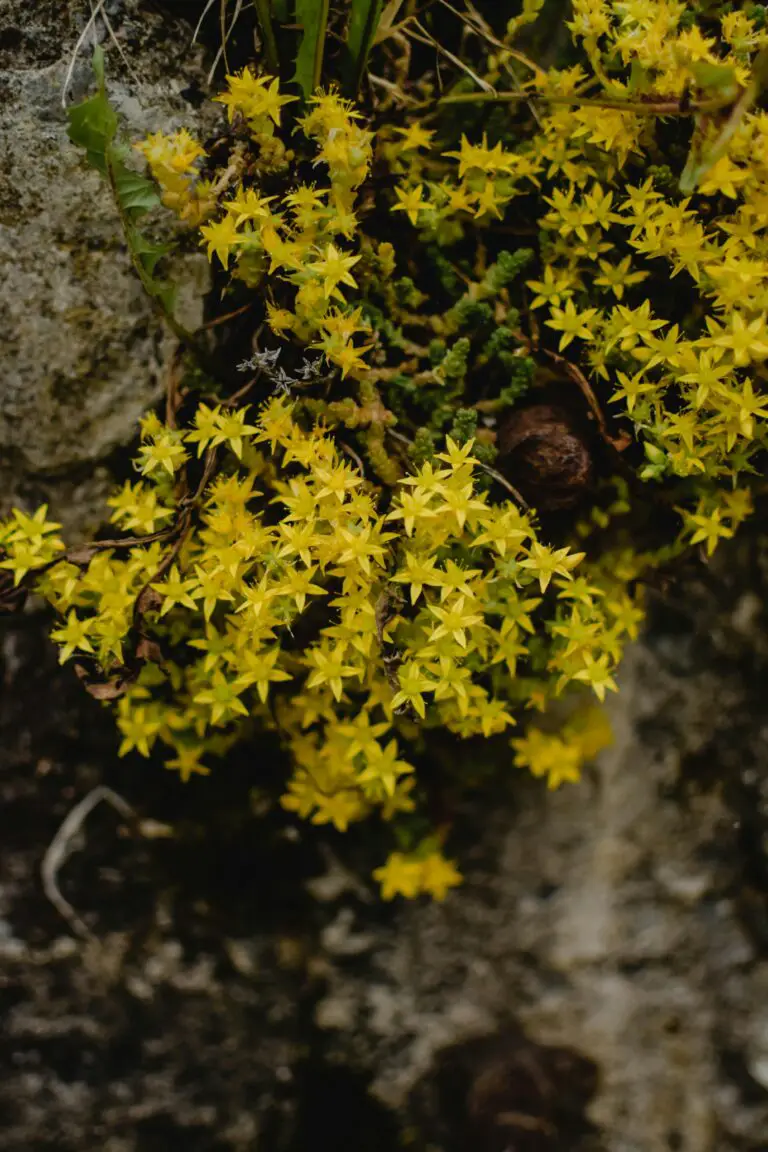
What Are Some Care Requirements for Keeping Sedum at Bay?
Imagine sedum as a pet that needs training. To prevent any unwelcome spreading, regular pruning and deadheading are key. Give them a trim, and stop those seed heads from sowing their wild oats all over your garden beds. If you’re in a warmer climate, be extra vigilant, as sedum can get a bit more zealous in those conditions.
Best Practices for Cultivating Sedum Without an Invasion
Sedum is like that friend who’s great in small doses. Plant it in well-draining soil and full to partial sun—think of the spot in your garden that’s a bit picky, where other plants might struggle. This is where your sedum can shine without taking over. Also, choose your varieties wisely; some are more social climbers than others. And by social climbers, we mean they might just climb all over your other plants!
Lastly, consider your local ecosystem. Is sedum a known troublemaker in your area? If so, it might be better to look for alternative plants that play nicer with your native flora and fauna.
Remember, with the right care and attention, sedum can be a beautiful and manageable addition to your garden tapestry. So, don’t be swayed by myths—get to know the habits of your green friends and you’ll all live harmoniously.
